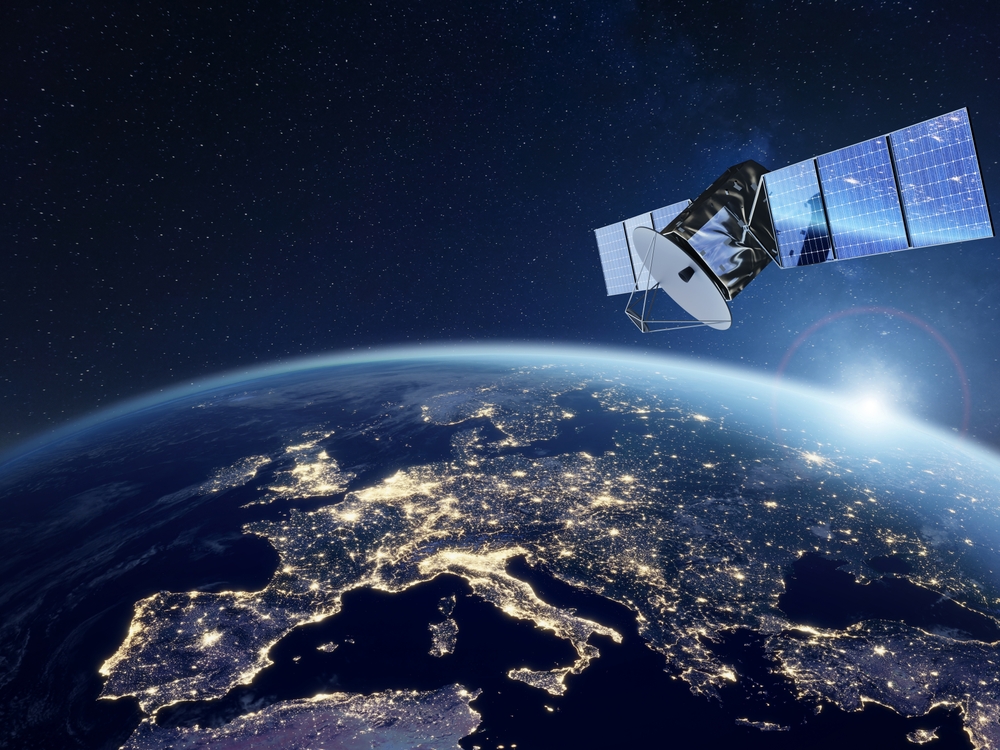ESA and Telesat showcase the potential of Non-Terrestrial Networks for timing and positioning

ESA, in collaboration with Telesat (Nasdaq and TSX: TSAT), has achieved a significant milestone in developing future satellite Internet technology, successfully testing new 5G capabilities that could revolutionise how businesses and individuals connect in remote areas.
A cross-directorate ESA team, led by the Technology directorate, successfully documented a live transmission and reception of a 100-Megahertz-wide 5G NR-Non-Terrestrial Network (NR-NTN) waveform with Positioning Reference Signal in the Ka-band from a Low Earth Orbit (LEO) satellite owned and operated by Telesat, a first of its kind experiment.
Bringing together members from ESA’s Connectivity and Secure Communications, Navigation, and Technology, Engineering and Quality directorates, the experiment showcased the growing importance that 5G NR-NTN (New Radio Non-Terrestrial Networks) technologies are playing across space and wider ecosystems. The demonstration, a result of a close technical cooperation between ESA’s Navigation Laboratory and 5G Laboratory, took place at the European Space Research and Technology Centre (ESTEC) site in the Netherlands.
Following standards developed under the 3rd Generation Partnership Project (3GPP), NR-NTN technologies will evolve and serve more sectors and businesses with new possibilities for businesses operating in remote locations, enabling them to maintain consistent communication and expand their operations into previously unreachable areas.
ESA is a leading contributor to 3GPP standards both for NTN and localisation. NR-NTN standard includes localisation capabilities, enabling to verify user location within 5-10 kilometres without relying on the Global Navigation Satellite System (GNSS) or other sensors.
Earlier this year Telesat and ESA signed a Memorandum of Understanding that enabled the use of Telesat’s LEO 3 demonstration satellite for the test campaign. The LEO 3 satellite serves an important role for low-latency customer applications testing, as well as antenna and modem development efforts in advance of the Telesat Lightspeed LEO constellation deployment.
This development represents just the beginning of a new era in satellite communications. ESA's research points toward even more advanced capabilities in the future. The next generation of systems will see multiple satellites (belonging to the same constellation or to different constellations) working together to provide seamless coverage.
Through this future-facing experiment, the test campaign employed STARE, a publicly available real-time software receiver of 5G NR and long-term evolution (LTE) signals developed by ESA, which now provides advanced processing of 5G non-terrestrial network signals transmitted by LEO satellites. Highlighting the importance of laboratory experimental activities and successful testing of these new systems, ESA continues to lead the development of next-generation satellite technologies.
The results of the experiment will be presented at ESA’s 11th Workshop on Satellite Navigation Technologies, taking place in ESTEC between 11-13 December 2024.
“Future 5G and 6G non-terrestrial networks will offer a unique opportunity to complement satellite communications with positioning. This experiment validates our internal technical capabilities and represents an important step toward more complex demonstrations in the future,” said Ivan Lapin, ESA’s Radio Navigation System Engineer and lead of the experiment.
“Showcasing the cross-directorate expertise ESA has showcases the cross-sector capabilities 5G Non-Terrestrial Networks already play, enabling technologies that benefit citizens and businesses,” said Antonio Franchi, ESA’s Head of the 5G/6G Non-Terrestrial Network (NTN) Programme Office.
“We are proud to continue to drive European technological leadership and innovation in the domain of Non-Terrestrial Networks. Test campaigns such as this, in collaboration with Telesat, showcase ESA’s role in NTN systems, which unlock social and economic opportunities for people and businesses,” said Fabrizio De Paolis, ESA’s 5G/6G Implementation Manager.
“This test and the wider collaboration with the European Space Agency confirms once again that Telesat is one of the world’s most innovative satellite operators, always ready to explore ground-breaking satellite technologies,” said Mario Neri, Telesat’s Director of Spectrum Strategy, Innovation and Space Sustainability.
As part of ESA's ongoing efforts to advance satellite navigation technologies, dedicated satellite infrastructure is under development within the LEO-PNT in-orbit demonstration project lead by the ESA Navigation directorate. Those satellites will employ 5G IoT-NTN and NR-NTN waveforms in S-band for demonstrating positioning performance in representative user environments for handheld users. It will be a new opportunity to further demonstrate the joint potential of NTN for communications and navigation.
"Integrating GNSS with complementary technologies like IoT-NTN and NR-NTN is a significant step forward in overcoming the limitations faced in challenging environments," said Florin Grec, LEO-PNT Mission and Experimentation Engineer & ESA’s 3GPP delegate for positioning aspects.


